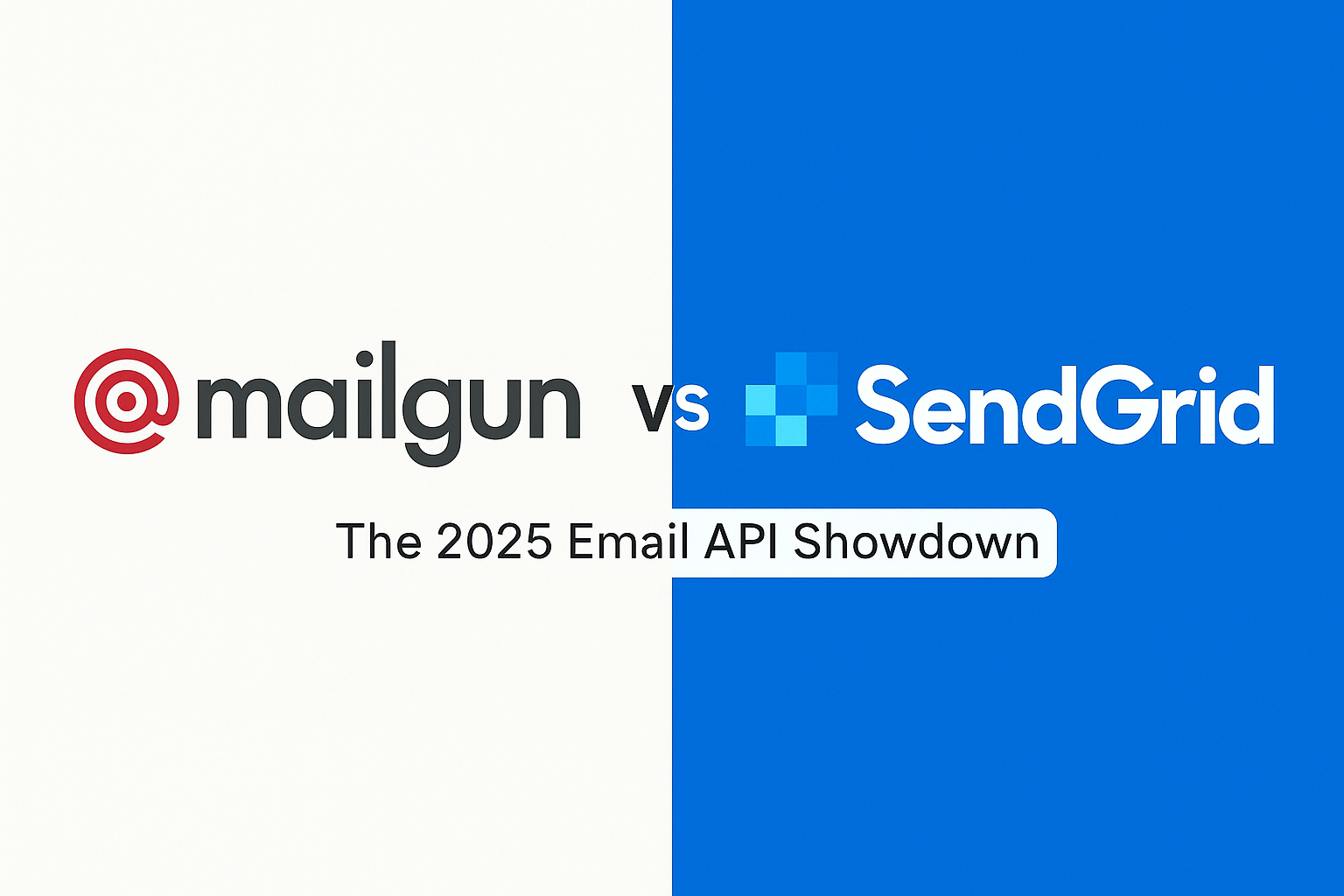In the age of automation, transactional emails are the unsung heroes of digital communication — confirming signups, sending receipts, recovering passwords, and more. Behind the scenes, tools like Mailgun and SendGrid power billions of these messages daily.
If you’re a developer, marketer, or business owner trying to decide between these two giants, this guide breaks down Mailgun vs SendGrid from a practical, 2025 perspective.
Overview: What They Are
- Mailgun: A developer-focused email delivery service, known for its flexibility, powerful API, and precision targeting of transactional emails. It’s built for engineering teams that want granular control.
- SendGrid (by Twilio): A broader platform that combines transactional and marketing email, known for scalability and user-friendliness. It appeals to both developers and marketers.
1.
Ease of Use
- Mailgun: Has a clean API-first design, but the interface can feel technical. Great for teams that prefer coding over clicking. The dashboard is straightforward but sparse for non-technical users.
- SendGrid: Offers a polished UI with intuitive tools for both marketing and transactional use cases. Developers love the APIs, while marketers appreciate the drag-and-drop email builder.
Winner: SendGrid
It’s more accessible for mixed teams — devs and non-devs alike.
2.
Deliverability
- Mailgun: Known for its reputation management features, such as IP warmup, dedicated IPs, and robust analytics. Mailgun is highly respected for B2B deliverability and technical fine-tuning.
- SendGrid: Also offers high deliverability rates, with strong infrastructure and shared IPs that work well out of the box. However, some users report that you need a dedicated IP or upgraded plan to match Mailgun’s delivery precision.
Winner: Tie
Both are excellent — but Mailgun gives you slightly more control if you’re willing to configure it.
3.
Features
| Feature | Mailgun | SendGrid |
|---|---|---|
| RESTful API | ✅ Excellent | ✅ Excellent |
| SMTP Support | ✅ | ✅ |
| Email Templates | ⚠️ Limited | ✅ Rich and visual |
| Marketing Campaigns | ❌ (via Mailjet) | ✅ Built-in |
| Analytics & Logs | ✅ Real-time | ✅ Visual dashboards |
| A/B Testing | ❌ | ✅ Yes |
| Inbound Email Routing | ✅ Strong | ✅ Available |
- Mailgun is more focused on email delivery and parsing.
- SendGrid is more of an email platform, with both transactional and marketing features.
Winner: SendGrid, if you’re looking for an all-in-one solution.
Mailgun is better if you only need high-performance transactional delivery.
4.
Pricing (2025 Snapshot)
- Mailgun (as of 2025):
- Free tier: 5,000 emails/month (for 1st 30 days)
- Pay-as-you-go pricing after that
- Advanced features (like dedicated IPs) behind higher tiers
- SendGrid (as of 2025):
- Free tier: 100 emails/day
- Essentials: Starts around $19.95/month for 50,000 emails
- Includes access to templates and basic support
Winner: Mailgun for short-term, developer-focused use.
SendGrid scales better with consistent outbound volume and marketing needs.
5.
Support and Documentation
- Mailgun: Solid developer docs, active community, but customer support is tiered. Best help comes at higher plans.
- SendGrid: Extensive documentation, API references, and onboarding resources. Live support is available even at lower tiers.
Winner: SendGrid
Better for teams that need quick answers and less engineering overhead.
Final Verdict: Which One Should You Choose?
| Choose Mailgun if… | Choose SendGrid if… |
|---|---|
| You’re a developer-first team | You want developer + marketer tools |
| You need fine-tuned deliverability control | You prefer all-in-one features |
| You focus on transactional email only | You also send newsletters and promotions |
| You value flexible pricing | You prioritize support and onboarding |
Bottom Line
- Mailgun is like a sharp tool in the hands of a skilled engineer — fast, precise, and powerful.
- SendGrid is like a Swiss army knife — versatile, easy to use, and ready for marketing teams too.
In 2025, both tools are rock-solid. Your choice comes down to your team’s makeup and your email strategy.


Leave a Reply